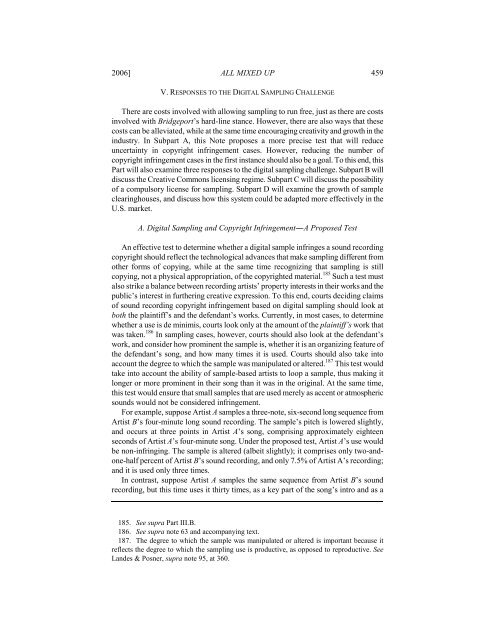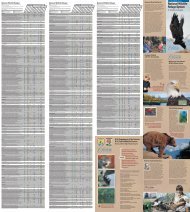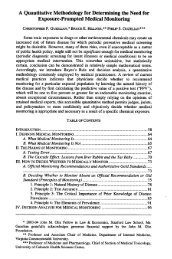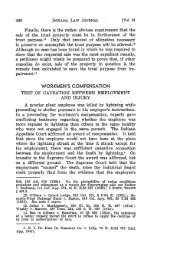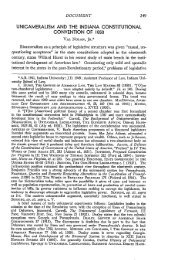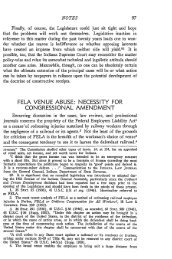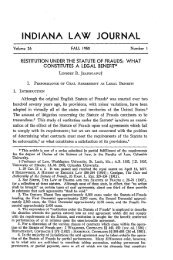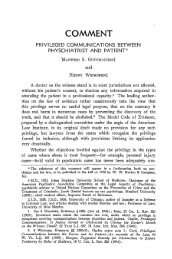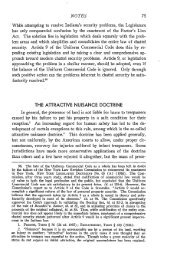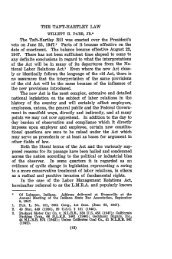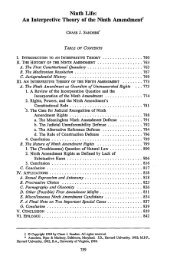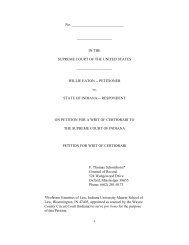Bridgeport Music v. Dimension Films - Indiana University School of ...
Bridgeport Music v. Dimension Films - Indiana University School of ...
Bridgeport Music v. Dimension Films - Indiana University School of ...
Create successful ePaper yourself
Turn your PDF publications into a flip-book with our unique Google optimized e-Paper software.
2006] ALL MIXED UP 459<br />
V. RESPONSES TO THE DIGITAL SAMPLING CHALLENGE<br />
There are costs involved with allowing sampling to run free, just as there are costs<br />
involved with <strong>Bridgeport</strong>’s hard-line stance. However, there are also ways that these<br />
costs can be alleviated, while at the same time encouraging creativity and growth in the<br />
industry. In Subpart A, this Note proposes a more precise test that will reduce<br />
uncertainty in copyright infringement cases. However, reducing the number <strong>of</strong><br />
copyright infringement cases in the first instance should also be a goal. To this end, this<br />
Part will also examine three responses to the digital sampling challenge. Subpart B will<br />
discuss the Creative Commons licensing regime. Subpart C will discuss the possibility<br />
<strong>of</strong> a compulsory license for sampling. Subpart D will examine the growth <strong>of</strong> sample<br />
clearinghouses, and discuss how this system could be adapted more effectively in the<br />
U.S. market.<br />
A. Digital Sampling and Copyright Infringement―A Proposed Test<br />
An effective test to determine whether a digital sample infringes a sound recording<br />
copyright should reflect the technological advances that make sampling different from<br />
other forms <strong>of</strong> copying, while at the same time recognizing that sampling is still<br />
copying, not a physical appropriation, <strong>of</strong> the copyrighted material. 185 Such a test must<br />
also strike a balance between recording artists’ property interests in their works and the<br />
public’s interest in furthering creative expression. To this end, courts deciding claims<br />
<strong>of</strong> sound recording copyright infringement based on digital sampling should look at<br />
both the plaintiff’s and the defendant’s works. Currently, in most cases, to determine<br />
whether a use is de minimis, courts look only at the amount <strong>of</strong> the plaintiff’s work that<br />
was taken. 186 In sampling cases, however, courts should also look at the defendant’s<br />
work, and consider how prominent the sample is, whether it is an organizing feature <strong>of</strong><br />
the defendant’s song, and how many times it is used. Courts should also take into<br />
account the degree to which the sample was manipulated or altered. 187 This test would<br />
take into account the ability <strong>of</strong> sample-based artists to loop a sample, thus making it<br />
longer or more prominent in their song than it was in the original. At the same time,<br />
this test would ensure that small samples that are used merely as accent or atmospheric<br />
sounds would not be considered infringement.<br />
For example, suppose Artist A samples a three-note, six-second long sequence from<br />
Artist B’s four-minute long sound recording. The sample’s pitch is lowered slightly,<br />
and occurs at three points in Artist A’s song, comprising approximately eighteen<br />
seconds <strong>of</strong> Artist A’s four-minute song. Under the proposed test, Artist A’s use would<br />
be non-infringing. The sample is altered (albeit slightly); it comprises only two-andone-half<br />
percent <strong>of</strong> Artist B’s sound recording, and only 7.5% <strong>of</strong> Artist A’s recording;<br />
and it is used only three times.<br />
In contrast, suppose Artist A samples the same sequence from Artist B’s sound<br />
recording, but this time uses it thirty times, as a key part <strong>of</strong> the song’s intro and as a<br />
185. See supra Part III.B.<br />
186. See supra note 63 and accompanying text.<br />
187. The degree to which the sample was manipulated or altered is important because it<br />
reflects the degree to which the sampling use is productive, as opposed to reproductive. See<br />
Landes & Posner, supra note 95, at 360.


